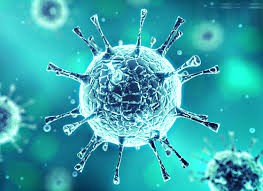I almost forgot that a virus named Chikungunya exists until my mentor asked me about it, Chikungunya a weird named virus has made me to confuse it with Dengue (similar virus with Chikungunya), I have to read to remind myself.
Well, the name ‘Chikungunya’ derives from a word in the Kimakonde language, meaning “to become contorted” and describes the stooped appearance of sufferers with joint pain (arthralgia). Chikungunya is a mosquito borne viral disease first described during an outbreak in southern Tanzania in 1952. Chikungunya is a viral disease transmitted to humans by infected mosquitoes. It causes fever and severe joint pain, there is no cure for the disease, and treatment is focused on relieving the symptoms. The proximity of mosquito breeding sites to human habitation is a significant risk factor for Chikungunya.
Signs and symptoms
- Chikungunya is characterized by an abrupt onset of fever frequently accompanied by joint pain. Other common signs and symptoms include muscle pain, headache, nausea (feeling of vomit), fatigue (tiredness) and rashes. The joint pain is often very debilitating (weakening), but usually lasts for a few days or may be prolonged to weeks.
- Most patients recover fully, but in some cases joint pain may persist for several months, or even years. Occasional cases of eye, neurological and heart complications have been reported, as well as gastrointestinal complaints. Serious complications are not common, but in older people, the disease can contribute to the cause of death. Often symptoms in infected individuals are mild and the infection may go unrecognized.
Transmission
- Chikungunya has been identified in nearly 40 countries in Asia, Africa, and Europe and also in the Americas.
- The virus is transmitted from human to human by the bites of infected female mosquitoes. Most commonly, the mosquitoes involved are Aedes aegypti and Aedes albopictus, two species which can also transmit other mosquito-borne viruses, including dengue. These mosquitoes can be found biting throughout daylight hours, though there may be peaks of activity in the early morning and late afternoon. Both species are found biting outdoors, but aegypti will also readily feed indoors.
- After the bite of an infected mosquito, onset (start) of illness occurs usually between four and eight days but can range from 2 to 12 days.
Treatment
There is no specific antiviral drug treatment for Chikungunya. Treatment is directed primarily at relieving the symptoms, including the joint pain using anti-pyretics (fever medicines), optimal analgesics (pain relievers) and fluids. There is no commercial Chikungunya vaccine.
Prevention and control
- The proximity of mosquito vector breeding sites to human habitation is a significant risk factor for Chikungunya as well as for other diseases that these species transmit.
- Prevention and control rely heavily on reducing the number of natural and artificial water-filled container habitats that support breeding of the mosquitoes. This requires mobilization of affected communities. During outbreaks, insecticides may be sprayed to kill flying mosquitoes, applies to surfaces in and around containers where the mosquitoes land, and use to treat water in containers to kill the immature larvae.
- For protection during outbreaks of Chikungunya, clothing which minimizes skin exposure to the day-biting vectors is advised. Repellents can be applied to exposed skin or to clothing in strict accordance with product label instructions.
Asmau Ahmad is a young female microbiologist and leaves in Kano, Nigeria. She can be reached via asmeee@yahoo.com


